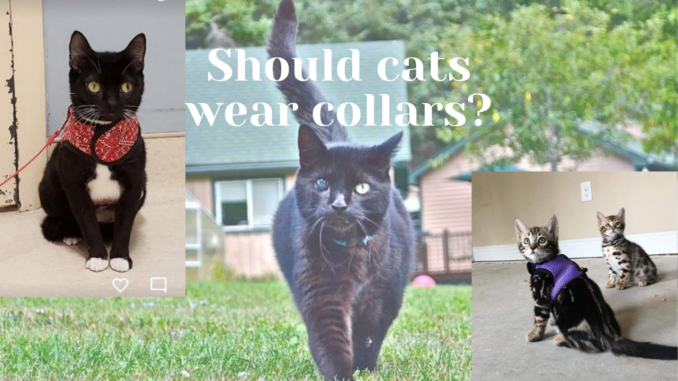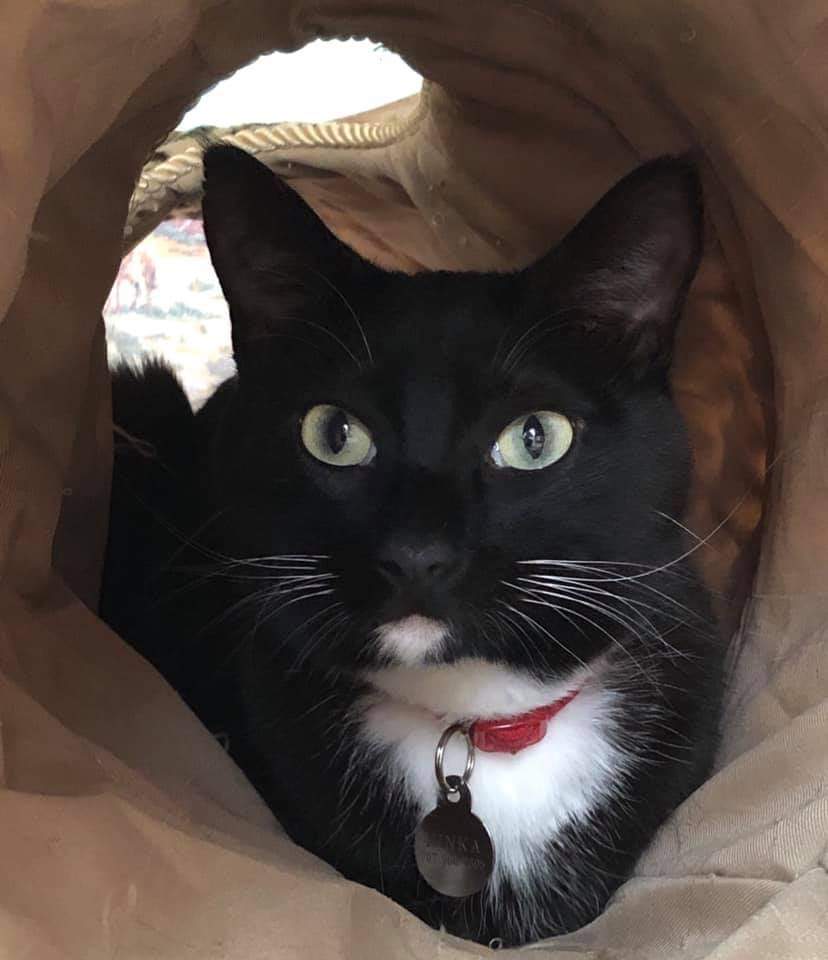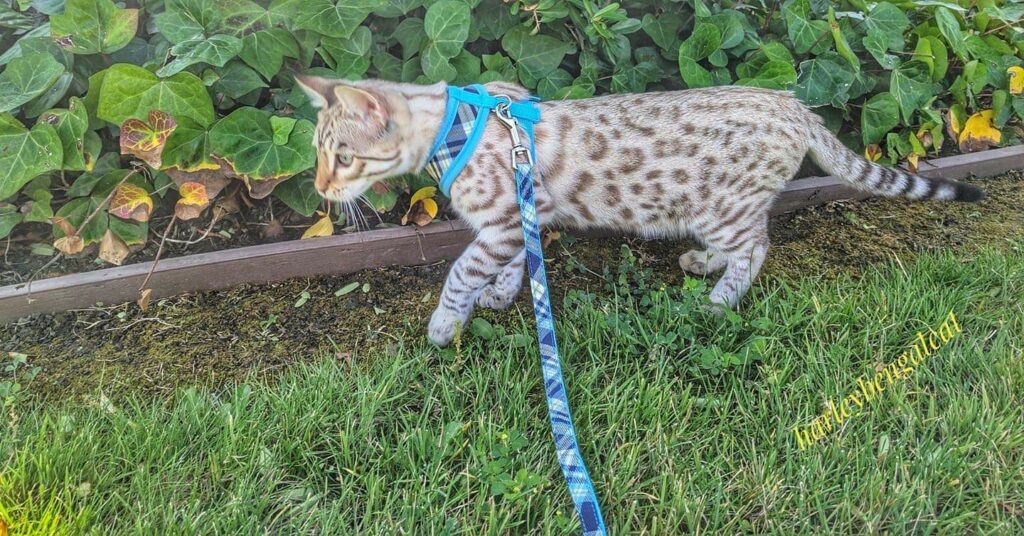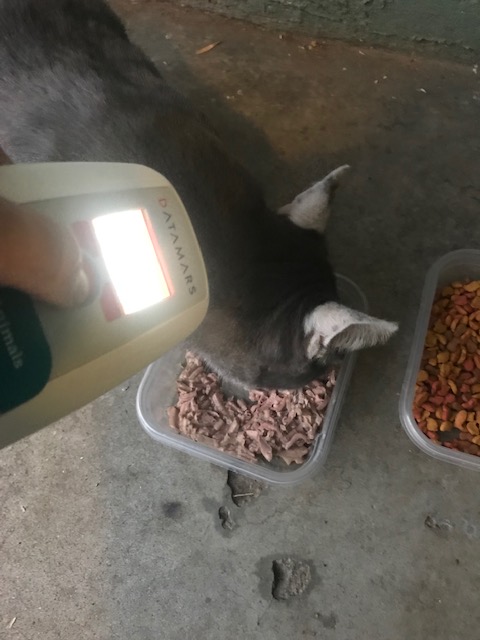
Learn the pros and cons of putting a collar on your cat, the different kinds of cat collars, and the difference between a collar and a harness.
Pros
Why would anyone put a collar on a cat? Like many pet related subjects, when you ask five people you will get five different answers.
One of the surprisingly common reasons, especially for a kitten or newly adopted cat, is adornment. There are some really attractive collars out there with cute patterns, bows, and even crystals. These collars don’t have ID tags on them and these kitties live indoors only, so they are strictly for looks. This isn’t a practical pro, but it does give enjoyment to the cat owner to dress up their pet in cute accessories.
A more practical use for the cat collar is to show that this is an owned pet. Many cats live outside, whether full or part time. Some are exclusively owned, some are “community cats” who go from house to house and receive care from several different families, and others are truly feral and not attached to any person.
There are a variety of reasons why someone might try to catch a cat they see outside. They may be a cat hater and want to remove them from the community. They may be a cat advocate doing TNR (trap, neuter, return) who is catching cats to get them spayed or neutered. They may simply like the cat and want to keep it, taking the cat into their home, not realizing it already has an owner. The collar is a clear sign that that particular cat is owned and has a home, and in most cases will deter someone from taking them.
Some cat owners don’t want to keep their pets inside, but they are concerned about bird predation. For this reason, they put a collar on their cat with a bell. According to theory, the bell will ring when the cat attempts to hunt, and the bird can get away. This sounds logical but I don’t know if it works in practice. Also, many people keep cats around to hunt mice and rats, so the bell would defeat that purpose.
The most practical reason to put a collar on a cat (or dog) is identification. Every day, countless cats go missing, and without ID they are less likely to be found. ID tags can be made at many pet stores through a vending machine, or they can be ordered online in a variety of shapes, sizes, and patterns. Collars can also be ordered with the information sewn in. I recently purchased these for my dogs because I like the way they look and my phone number is easy to see.

ID can not only prevent your cat from being taken, it could save their life. If your cat is found ill or injured by a good sam, they can call you to come pick them up or to authorize treatment at a veterinarian. Without ID, a found cat who is gravely ill or injured may be put down by a veterinarian or animal shelter worker, and you will never know what happened.
Cons
There are some significant downsides to putting a collar on a cat. One of the most serious is the potential to cause hanging death. The old saying “Curiosity killed the cat” is unfortunately true, and cats do get into some sticky situations. Climbing trees and fences outside and even climbing into a closet or under furniture inside the house can cause the collar to hook around something and get caught. If the collar doesn’t stretch or break, the cat can be strangled.

I have personally seen cats suffer other collar-related injuries thanks to my many years of pet sitting experience. In one case, the cat must have been grooming himself and got his lower jaw hooked around the collar. By the time I arrived, his head was swollen up like a baseball and presumably he hadn’t been able to eat or drink for who knows how long. I was able to cut the collar off and take him to the vet. He quickly recovered, but had I not found him and acted quickly it could have had a worse result.
My own cat injured his leg which I will describe in the section below on breakaway collars.
Collar vs. harness
The harness is a great tool for walking a cat on a leash. Many people are exploring this as a way to get their cats some safe outside time. With proper equipment, introduction, and training, this can work very well. Some people even take their cats on trips to parks, hiking and boating, although this isn’t something I’d recommend. I have handled more than one lost cat case due to this practice, and the cats were sadly never found.

Except when training and walking, the harness should not be left on the cat (or dog, in my opinion). The harness covers a lot of area on the body and can be uncomfortable. Because it is used for leash walking, it won’t stretch or break. It can get caught on things in the environment, causing injury like a collar. It can also cause skin irritation and hair loss due to chafing.
Breakaway collars
There are several different kinds of “breakaway” collars for cats with varying effectiveness.
One kind features a solid cloth collar, usually nylon, connected by a small strip of elastic. Should the collar get caught on something, the elastic is supposed to stretch so that the collar will slip off over the head. While this sounds good in theory, I have seen these kinds of collars not work as advertised. The elastic can deteriorate over time or if it gets wet or dirty and may not stretch when needed. If you choose this type of collar, inspect it regularly to make sure it is in good working order, and replace if it is not.
Another kind features a special clip which is supposed to stay closed under normal circumstances but pop open under strong pressure, such as getting caught. While these work fine when tested in your hands, there is no guarantee that they will work in an emergency situation. For that reason I would recommend fitting them somewhat loosely so that they can slip off f your cat gets into trouble..
Beastie Bands are made of solid neoprene. They come in a wide variety of colors and patterns and can be cut to fit your cat. I no longer put collars on my cats, but when I did, this is the kind I used. Because the whole thing expands, they are the most safe and effective option of the breakaway collars in my opinion. An ID tag can be hung on the metal loop to provide protection for your cat should they become lost, ill, or injured.
While I do recommend this collar, it is not foolproof. Like any other breakaway collar, it can come off, so you may have to replace it frequently. I did have one bad experience with my outdoor access cat many years ago. He went missing and returned a month later with his leg caught in the collar. It had been there for some time and the skin was wide open and infected. It took two surgeries to repair the damaged area. This was obviously a special circumstance because he was missing and the collar stayed in that position for a long time, but these things can happen to curious outdoor cats.
Microchipping

Microchipping is a lifetime form of ID for cats, dogs, and other companion animals. It is quick, relatively painless (like a shot), inexpensive, and highly effective. All cats and dogs should be microchipped as a primary or backup form of ID. If your cat isn’t or you’re not sure, call your veterinarian today to inquire.
While highly recommended, like anything else there are some caveats. The chip is inside the body and not visible, so someone seeing your cat will not know there is a chip unless they have him scanned at a vet or shelter. The chip may not come up right away on the scan, due to improper scanning procedure or a low battery or otherwise defective scanner wand.
Knowing how microchips work (and don’t work) is critical to their effectiveness. Many pet owners do not understand this, so the chip will not help keep their cat or dog safe. I detail this important information in this article and video.
If you decide to put a collar on your kitty, be sure to make a safe choice, and affix ID to the collar.


Be the first to comment